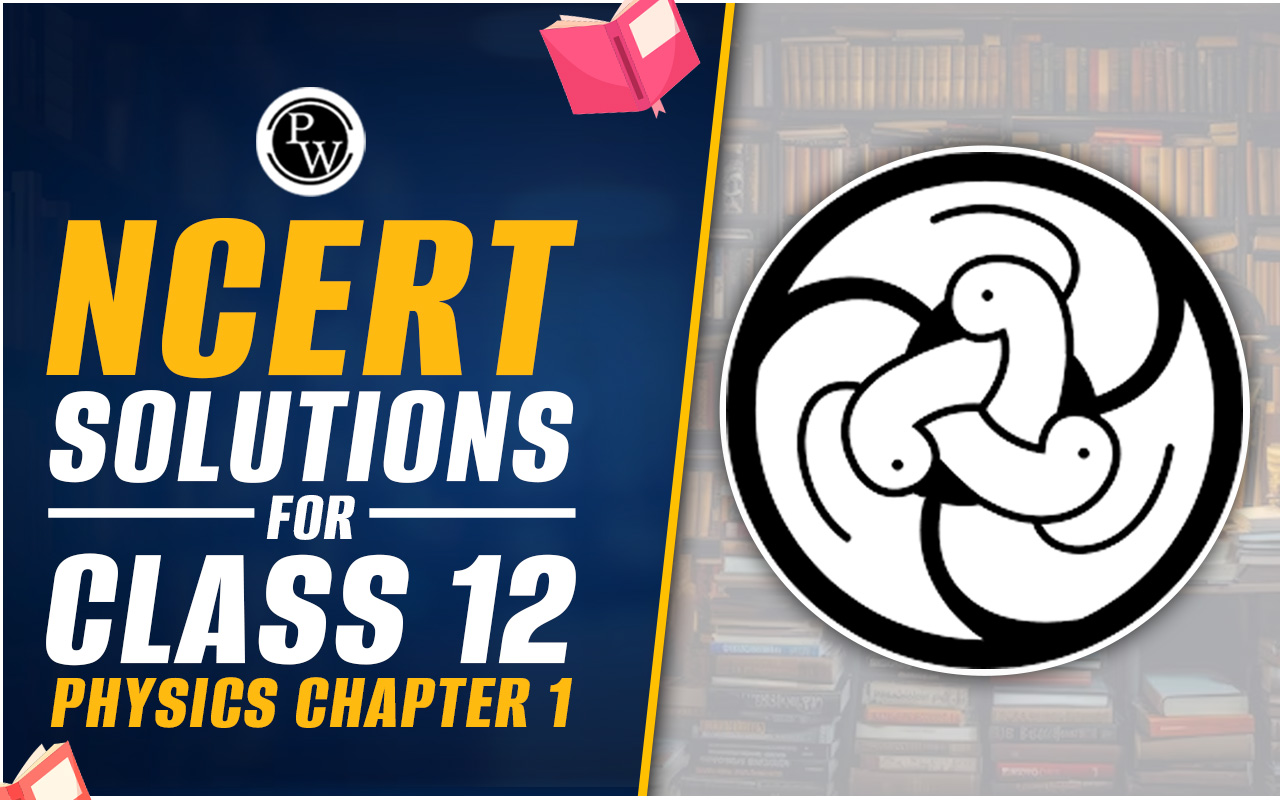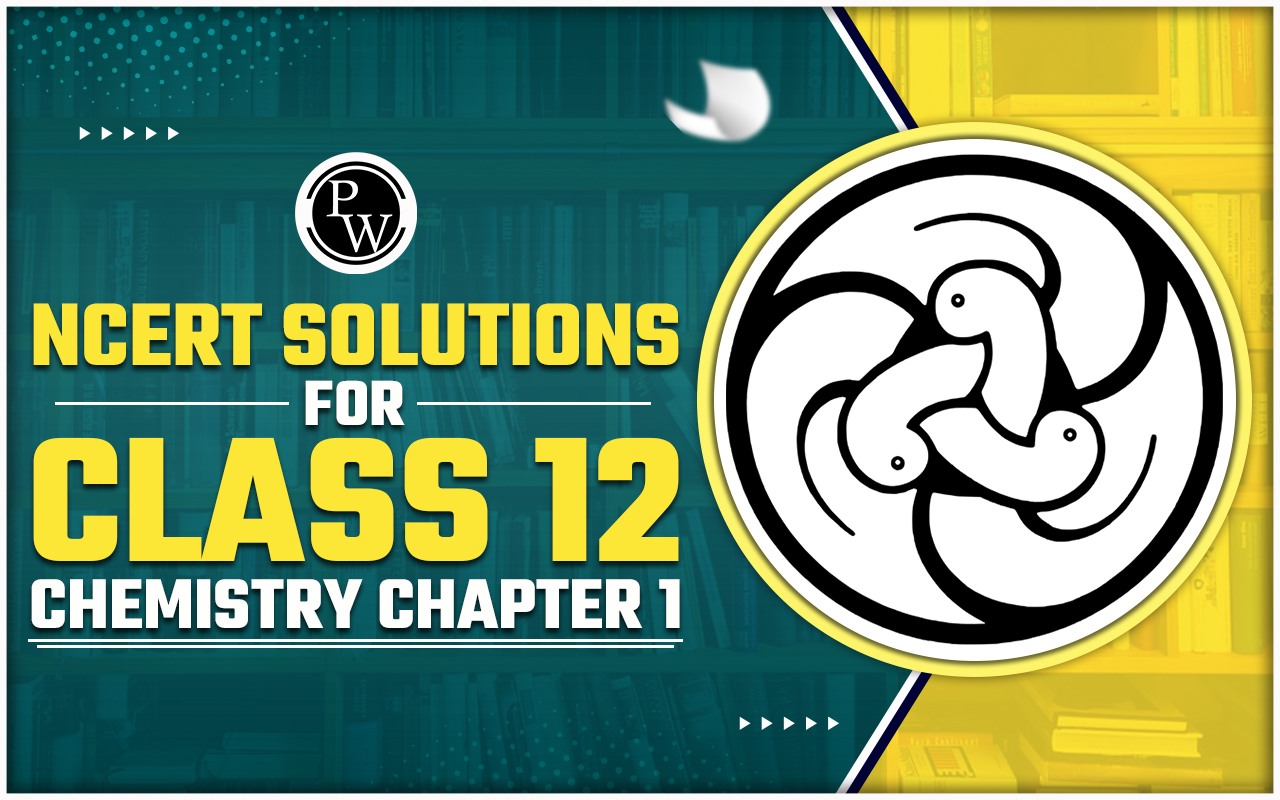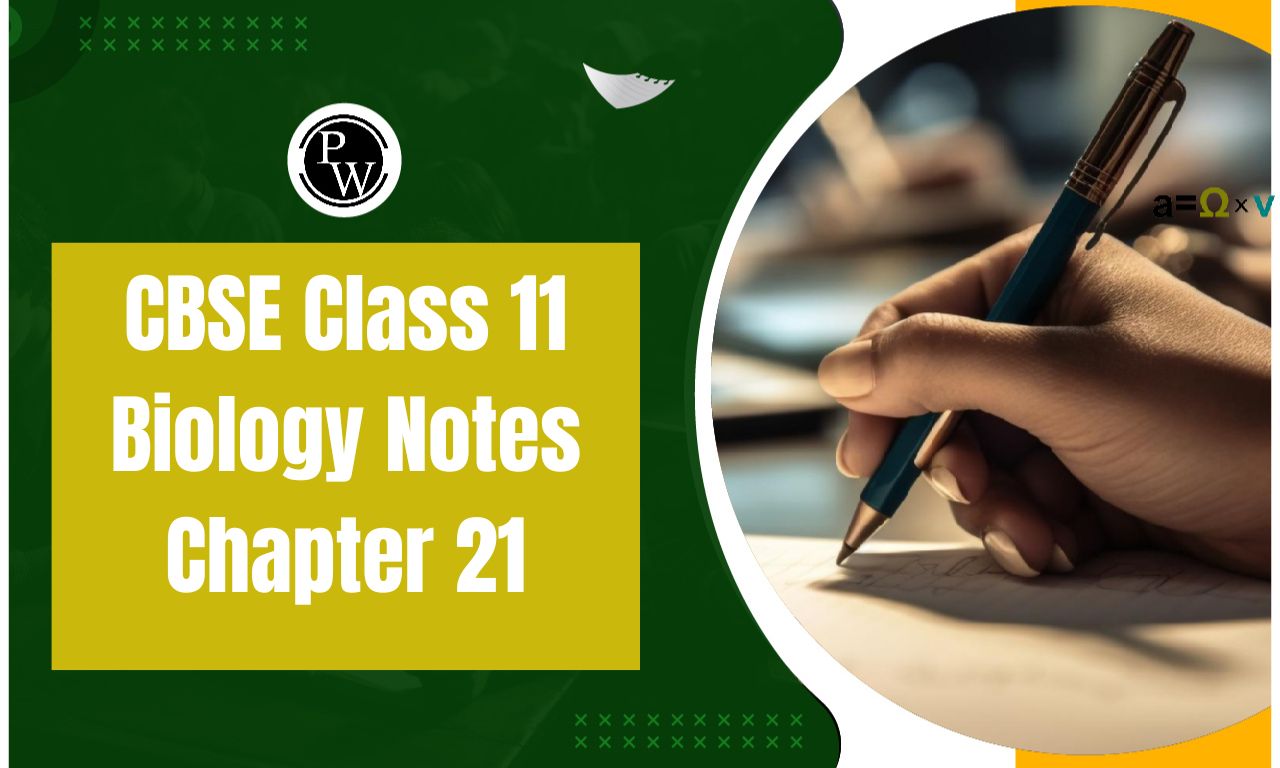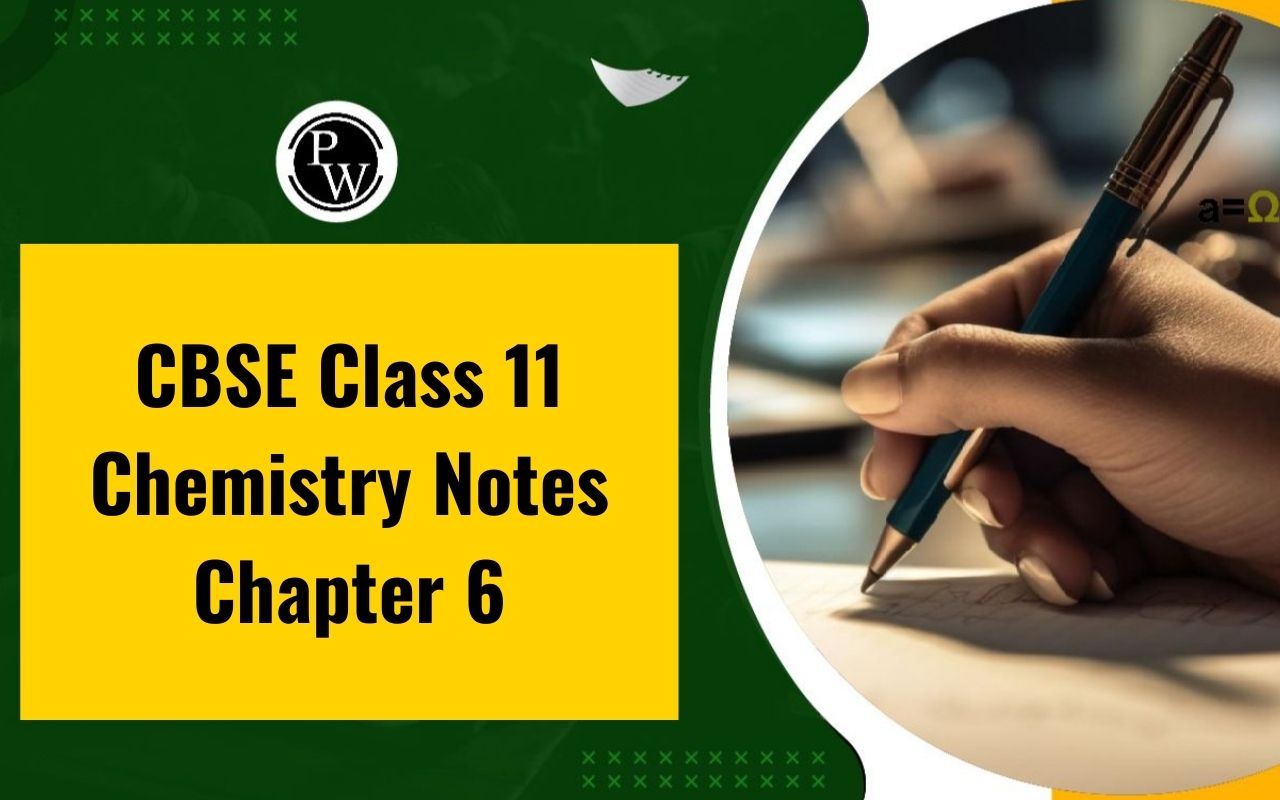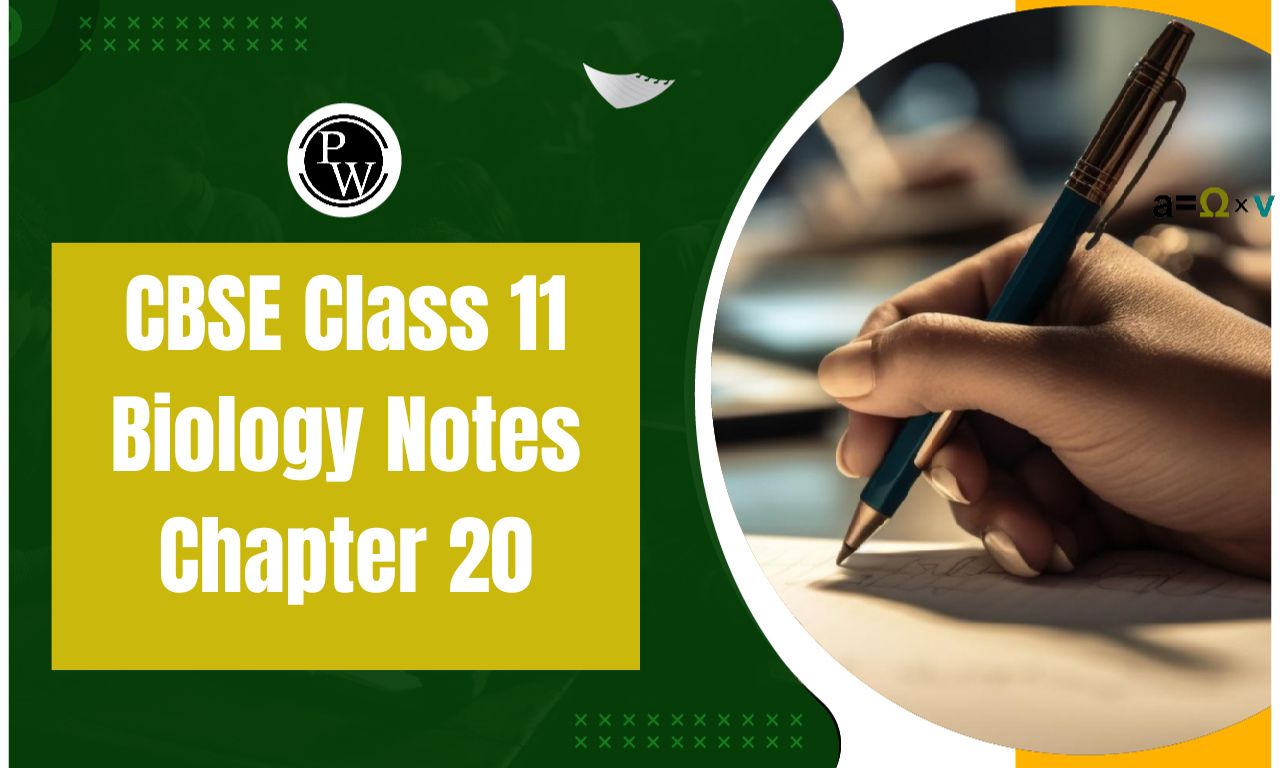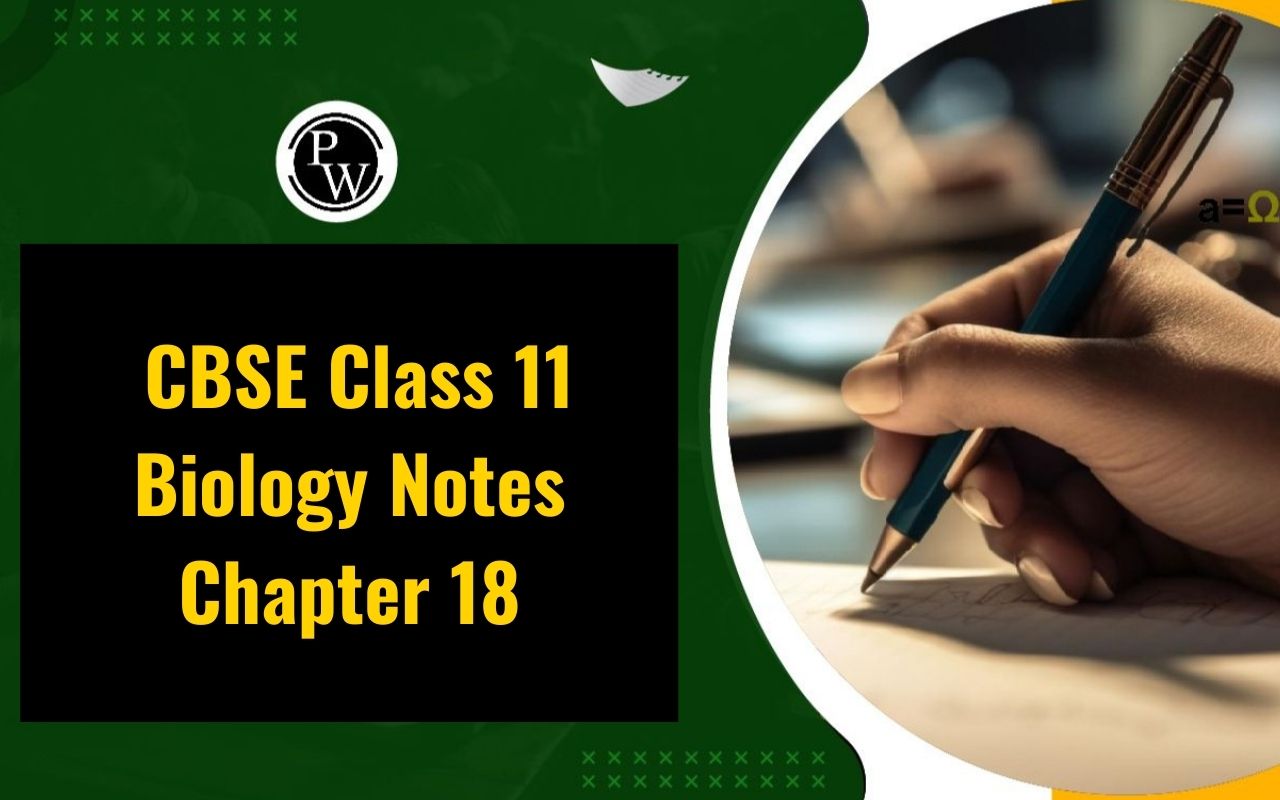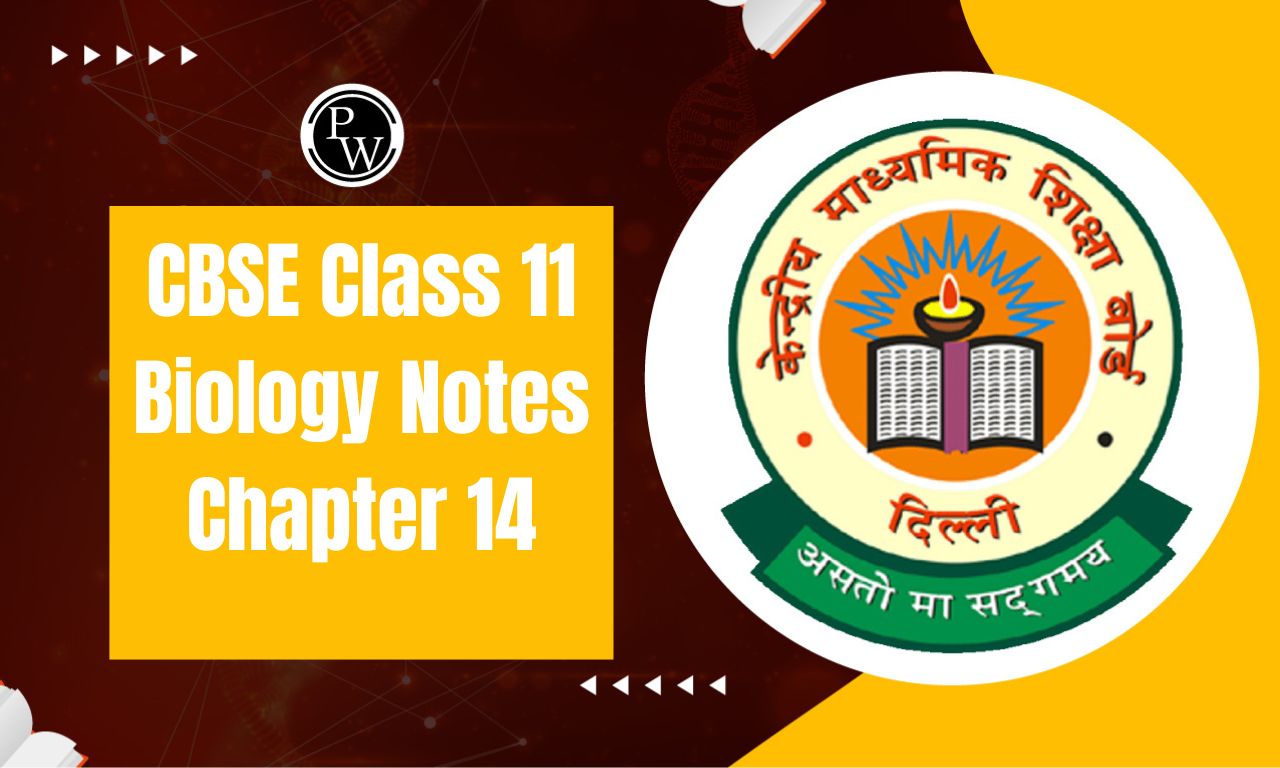
NCERT Solutions For Class 12 Physics Chapter 14 Semiconductor Electronics Materials, Devices and Simple Circuits
NCERT Solutions For Class 12 Physics Chapter 14 Semiconductor Electronics Materials, Devices and Simple Circuits is prepared by our senior and renowned teachers of Physics Wallah primary focus while solving these questions of class-12 in NCERT textbook, also do read theory of this Chapter 14 Semiconductor Electronics Materials, Devices and Simple Circuits while going before solving the NCERT questions. You can download and share NCERT Solutions of Class 12 Physics from Physics Wallah.NCERT Solutions For Class 12 Physics Chapter 14 Overview
NCERT Solutions for Class 12 Physics Chapter 14 covers these important topics. Students are advised to thoroughly review each topic in order to completely understand the ideas covered in the chapter and make good use of the offered solutions. These solutions are a result of the teachers at Physics Wallah working hard to improve students' understanding of the concepts covered in the chapter. After going over and rehearsing these answers, the goal is for students to easily score high exam results.NCERT Solutions For Class 12 Physics Chapter 14 PDF
To help students understand and practise chapter topics, our team of experts at Physics Wallah has developed thorough solutions for NCERT Class 12 Physics, Chapter 14. The purpose of these questions is to make explanations easier to understand for students. You can use the following link to download the NCERT Solutions for Class 12 Physics, Chapter 14 Semiconductor Electronics Materials, Devices and Simple Circuits PDF:NCERT Solutions Class 12 Physics Chapter 14 PDF Download Link
NCERT Solutions For Class 12 Physics Chapter 14
Answer The Following Question Answer NCERT Solutions For Class 12 Physics Chapter 14 Semiconductor Electronics Materials, Devices and Simple Circuits:
Question 1. In an n-type silicon, which of the following statement is true: (a) Electrons are majority carriers and trivalent atoms are the dopants. (b) Electrons are minority carriers and pentavalent atoms are the dopants. (c) Holes are minority carriers and pentavalent atoms are the dopants. (d) Holes are majority carriers and trivalent atoms are the dopants. Solution : The correct statement is (c). In an n-type silicon, the electrons are the majority carriers, while the holes are the minority carriers. An n-type semiconductor is obtained when pentavalent atoms, such as phosphorus, are doped in silicon atoms. Question 2. Which of the statements given in Exercise 14.1 is true for p-type semiconductors. Solution : The correct statement is (d). In a p-type semiconductor, the holes are the majority carriers, while the electrons are the minority carriers. A p-type semiconductor is obtained when trivalent atoms, such as aluminium, are doped in silicon atoms. Question 3. Carbon, silicon and germanium have four valence electrons each. These are characterised by valence and conduction bands separated by energy band gap respectively equal to (Eg)C, (Eg)Si and (Eg)Ge. Which of the following statements is true? (a) (Eg)Si < (Eg)Ge < (Eg)C (b) (Eg)C < (Eg)Ge > (Eg)Si (c) (Eg)C > (Eg)Si > (Eg)Ge (d) (Eg)C = (Eg)Si = (Eg)Ge Solution : The correct statement is (c). Of the three given elements, the energy band gap of carbon is the maximum and that of germanium is the least. The energy band gap of these elements are related as: (Eg)C > (Eg)Si > (Eg)Ge Question 4. In an unbiased p-n junction, holes diffuse from the p-region to n-region because (a) free electrons in the n-region attract them. (b) they move across the junction by the potential difference. (c) hole concentration in p-region is more as compared to n-region. (d) All the above. Solution : The correct statement is (c). The diffusion of charge carriers across a junction takes place from the region of higher concentration to the region of lower concentration. In this case, the p-region has greater concentration of holes than the n-region. Hence, in an unbiased p-n junction, holes diffuse from the p-region to the n-region. Question 5. When a forward bias is applied to a p-n junction, it (a) raises the potential barrier. (b) reduces the majority carrier current to zero. (c) lowers the potential barrier. (d) None of the above. Solution : The correct statement is (c). When a forward bias is applied to a p-n junction, it lowers the value of potential barrier. In the case of a forward bias, the potential barrier opposes the applied voltage. Hence, the potential barrier across the junction gets reduced. 6. For transistor action, which of the following statements are correct: (a) Base, emitter and collector regions should have similar size and doping concentrations. (b) The base region must be very thin and lightly doped. (c) The emitter junction is forward biased and collector junction is reverse biased. (d) Both the emitter junction as well as the collector junction are forward biased. Solution : The correct statement is (b), (c). For a transistor action, the junction must be lightly doped so that the base region is very thin. Also, the emitter junction must be forward-biased and collector junction should be reverse-biased. Question 7. For a transistor amplifier, the voltage gain (a) remains constant for all frequencies. (b) is high at high and low frequencies and constant in the middle frequency range. (c) is low at high and low frequencies and constant at mid frequencies. (d) None of the above. Solution : The correct statement is (c). The voltage gain of a transistor amplifier is constant at mid frequency range only. It is low at high and low frequencies. Question 8. In half-wave rectification, what is the output frequency if the input frequency is 50 Hz. What is the output frequency of a full-wave rectifier for the same input frequency. Solution : Input frequency = 50 Hz For a half-wave rectifier, the output frequency is equal to the input frequency. ∴Output frequency = 50 Hz For a full-wave rectifier, the output frequency is twice the input frequency. ∴Output frequency = 2 × 50 = 100 Hz Question 9. For a CE-transistor amplifier, the audio signal voltage across the collected resistance of 2 kΩ is 2 V. Suppose the current amplification factor of the transistor is 100, find the input signal voltage and base current, if the base resistance is 1 kΩ. Solution : Collector resistance, RC = 2 kΩ = 2000 Ω Audio signal voltage across the collector resistance, V = 2 V Current amplification factor of the transistor, β = 100 Base resistance, RB = 1 kΩ = 1000 Ω Input signal voltage = Vi Base current = IB We have the amplification relation as: Voltage amplification =
 Therefore, the input signal voltage of the amplifier is 0.01 V.
Base resistance is given by the relation:
Therefore, the input signal voltage of the amplifier is 0.01 V.
Base resistance is given by the relation:
 Therefore, the base current of the amplifier is 10 μA.
Question
10. Two amplifiers are connected one after the other in series (cascaded). The first amplifier has a voltage gain of 10 and the second has a voltage gain of 20. If the input signal is 0.01 volt, calculate the output ac signal.
Solution :
Voltage gain of the first amplifier, V1 = 10
Voltage gain of the second amplifier, V2 = 20
Input signal voltage, Vi = 0.01 V
Output AC signal voltage = Vo
The total voltage gain of a two-stage cascaded amplifier is given by the product of voltage gains of both the stages, i.e.,
V = V1 × V2
= 10 × 20 = 200
We have the relation:
V = V
o
/V
i
V0 = V × Vi
= 200 × 0.01 = 2 V
Therefore, the output AC signal of the given amplifier is 2 V.
Question
11. A p-n photodiode is fabricated from a semiconductor with band gap of 2.8 eV. Can it detect a wavelength of 6000 nm?
Solution :
Energy band gap of the given photodiode, Eg = 2.8 eV
Wavelength, λ = 6000 nm = 6000 × 10−9 m
The energy of a signal is given by the relation:
Therefore, the base current of the amplifier is 10 μA.
Question
10. Two amplifiers are connected one after the other in series (cascaded). The first amplifier has a voltage gain of 10 and the second has a voltage gain of 20. If the input signal is 0.01 volt, calculate the output ac signal.
Solution :
Voltage gain of the first amplifier, V1 = 10
Voltage gain of the second amplifier, V2 = 20
Input signal voltage, Vi = 0.01 V
Output AC signal voltage = Vo
The total voltage gain of a two-stage cascaded amplifier is given by the product of voltage gains of both the stages, i.e.,
V = V1 × V2
= 10 × 20 = 200
We have the relation:
V = V
o
/V
i
V0 = V × Vi
= 200 × 0.01 = 2 V
Therefore, the output AC signal of the given amplifier is 2 V.
Question
11. A p-n photodiode is fabricated from a semiconductor with band gap of 2.8 eV. Can it detect a wavelength of 6000 nm?
Solution :
Energy band gap of the given photodiode, Eg = 2.8 eV
Wavelength, λ = 6000 nm = 6000 × 10−9 m
The energy of a signal is given by the relation:
.png) Where,
h = Planck’s constant
= 6.626 × 10−34 Js
c = Speed of light
= 3 × 108 m/s
Where,
h = Planck’s constant
= 6.626 × 10−34 Js
c = Speed of light
= 3 × 108 m/s
 But 1.6 × 10−19 J = 1 eV
∴E = 3.313 × 10−20 J
But 1.6 × 10−19 J = 1 eV
∴E = 3.313 × 10−20 J
 The energy of a signal of wavelength 6000 nm is 0.207 eV, which is less than 2.8 eV − the energy band gap of a photodiode. Hence, the photodiode cannot detect the signal.
Question
12. The number of silicon atoms per m3 is 5 × 1028. This is doped simultaneously with 5 × 1022 atoms per m3 of Arsenic and 5 × 1020 per m3 atoms of Indium. Calculate the number of electrons and holes. Given that ni= 1.5 × 1016 m−3. Is the material n-type or p-type?
Solution :
Number of silicon atoms, N = 5 × 1028 atoms/m3
Number of arsenic atoms, nAs = 5 × 1022 atoms/m3
Number of indium atoms, nIn = 5 × 1020 atoms/m3
Number of thermally-generated electrons, ni = 1.5 × 1016 electrons/m3
Number of electrons, ne = 5 × 1022 − 1.5 × 1016 ≈ 4.99 × 1022
Number of holes = nh
In thermal equilibrium, the concentrations of electrons and holes in a semiconductor are related as:
nenh = ni2
The energy of a signal of wavelength 6000 nm is 0.207 eV, which is less than 2.8 eV − the energy band gap of a photodiode. Hence, the photodiode cannot detect the signal.
Question
12. The number of silicon atoms per m3 is 5 × 1028. This is doped simultaneously with 5 × 1022 atoms per m3 of Arsenic and 5 × 1020 per m3 atoms of Indium. Calculate the number of electrons and holes. Given that ni= 1.5 × 1016 m−3. Is the material n-type or p-type?
Solution :
Number of silicon atoms, N = 5 × 1028 atoms/m3
Number of arsenic atoms, nAs = 5 × 1022 atoms/m3
Number of indium atoms, nIn = 5 × 1020 atoms/m3
Number of thermally-generated electrons, ni = 1.5 × 1016 electrons/m3
Number of electrons, ne = 5 × 1022 − 1.5 × 1016 ≈ 4.99 × 1022
Number of holes = nh
In thermal equilibrium, the concentrations of electrons and holes in a semiconductor are related as:
nenh = ni2
 =
=
 Therefore, the number of electrons is approximately 4.99 × 1022 and the number of holes is about 4.51 × 109. Since the number of electrons is more than the number of holes, the material is an n-type semiconductor.
Question
13. In an intrinsic semiconductor the energy gap Egis 1.2 eV. Its hole mobility is much smaller than electron mobility and independent of temperature. What is the ratio between conductivity at 600K and that at 300K? Assume that the temperature dependence of intrinsic carrier concentration niis given by
Therefore, the number of electrons is approximately 4.99 × 1022 and the number of holes is about 4.51 × 109. Since the number of electrons is more than the number of holes, the material is an n-type semiconductor.
Question
13. In an intrinsic semiconductor the energy gap Egis 1.2 eV. Its hole mobility is much smaller than electron mobility and independent of temperature. What is the ratio between conductivity at 600K and that at 300K? Assume that the temperature dependence of intrinsic carrier concentration niis given by
 where n0 is a constant.
Solution :
Energy gap of the given intrinsic semiconductor, Eg = 1.2 eV
The temperature dependence of the intrinsic carrier-concentration is written as:
where n0 is a constant.
Solution :
Energy gap of the given intrinsic semiconductor, Eg = 1.2 eV
The temperature dependence of the intrinsic carrier-concentration is written as:
 Where,
kB = Boltzmann constant = 8.62 × 10−5 eV/K
T = Temperature
n0 = Constant
Initial temperature, T1 = 300 K
The intrinsic carrier-concentration at this temperature can be written as:
Where,
kB = Boltzmann constant = 8.62 × 10−5 eV/K
T = Temperature
n0 = Constant
Initial temperature, T1 = 300 K
The intrinsic carrier-concentration at this temperature can be written as:
 … (1)
Final temperature, T2 = 600 K
The intrinsic carrier-concentration at this temperature can be written as:
… (1)
Final temperature, T2 = 600 K
The intrinsic carrier-concentration at this temperature can be written as:
 … (2)
The ratio between the conductivities at 600 K and at 300 K is equal to the ratio between the respective intrinsic carrier-concentrations at these temperatures.
… (2)
The ratio between the conductivities at 600 K and at 300 K is equal to the ratio between the respective intrinsic carrier-concentrations at these temperatures.
 Therefore, the ratio between the conductivities is 1.09 × 105.
Question
14. In a p-n junction diode, the current I can be expressed as
Therefore, the ratio between the conductivities is 1.09 × 105.
Question
14. In a p-n junction diode, the current I can be expressed as
 where I0 is called the reverse saturation current, V is the voltage across the diode and is positive for forward bias and negative for reverse bias, and I is the current through the diode, kBis the Boltzmann constant (8.6×10−5 eV/K) and T is the absolute temperature. If for a given diode I0 = 5 × 10−12 A and T = 300 K, then
(a) What will be the forward current at a forward voltage of 0.6 V?
(b) What will be the increase in the current if the voltage across the diode is increased to 0.7 V?
(c) What is the dynamic resistance?
(d) What will be the current if reverse bias voltage changes from 1 V to 2 V?
Solution :
In a p-n junction diode, the expression for current is given as:
where I0 is called the reverse saturation current, V is the voltage across the diode and is positive for forward bias and negative for reverse bias, and I is the current through the diode, kBis the Boltzmann constant (8.6×10−5 eV/K) and T is the absolute temperature. If for a given diode I0 = 5 × 10−12 A and T = 300 K, then
(a) What will be the forward current at a forward voltage of 0.6 V?
(b) What will be the increase in the current if the voltage across the diode is increased to 0.7 V?
(c) What is the dynamic resistance?
(d) What will be the current if reverse bias voltage changes from 1 V to 2 V?
Solution :
In a p-n junction diode, the expression for current is given as:
 Where,
I0 = Reverse saturation current = 5 × 10−12 A
T = Absolute temperature = 300 K
kB = Boltzmann constant = 8.6 × 10−5 eV/K = 1.376 × 10−23 J K−1
V = Voltage across the diode
(a) Forward voltage, V = 0.6 V
∴Current, I =
Where,
I0 = Reverse saturation current = 5 × 10−12 A
T = Absolute temperature = 300 K
kB = Boltzmann constant = 8.6 × 10−5 eV/K = 1.376 × 10−23 J K−1
V = Voltage across the diode
(a) Forward voltage, V = 0.6 V
∴Current, I =
 Therefore, the forward current is about 0.0256 A.
(b) For forward voltage, V’ = 0.7 V, we can write: I' =
Therefore, the forward current is about 0.0256 A.
(b) For forward voltage, V’ = 0.7 V, we can write: I' =
.png) =
=
 Hence, the increase in current, ΔI = I' − I
= 1.257 − 0.0256 = 1.23 A
(c) Dynamic resistance = Change in Voltage/Change in Current
= 0.7 - 0.6 / 1.23 = 0.081Ω
(d) If the reverse bias voltage changes from 1 V to 2 V, then the current (I) will almost remain equal to I0 in both cases. Therefore, the dynamic resistance in the reverse bias will be infinite.
Question
15. You are given the two circuits as shown in Fig. 14.44. Show that circuit (a) acts as OR gate while the circuit (b) acts as AND gate.
Hence, the increase in current, ΔI = I' − I
= 1.257 − 0.0256 = 1.23 A
(c) Dynamic resistance = Change in Voltage/Change in Current
= 0.7 - 0.6 / 1.23 = 0.081Ω
(d) If the reverse bias voltage changes from 1 V to 2 V, then the current (I) will almost remain equal to I0 in both cases. Therefore, the dynamic resistance in the reverse bias will be infinite.
Question
15. You are given the two circuits as shown in Fig. 14.44. Show that circuit (a) acts as OR gate while the circuit (b) acts as AND gate.

 Solution :
(a) A and B are the inputs and Y is the output of the given circuit. The left half of the given figure acts as the NOR Gate, while the right half acts as the NOT Gate. This is shown in the following figure.
Solution :
(a) A and B are the inputs and Y is the output of the given circuit. The left half of the given figure acts as the NOR Gate, while the right half acts as the NOT Gate. This is shown in the following figure.
 Hence, the output of the NOR Gate =
Hence, the output of the NOR Gate =
 This will be the input for the NOT Gate. Its output will be
This will be the input for the NOT Gate. Its output will be
 = A + B
∴Y = A + B
Hence, this circuit functions as an OR Gate.
(b) A and B are the inputs and Y is the output of the given circuit. It can be observed from the following figure that the inputs of the right half NOR Gate are the outputs of the two NOT Gates.
= A + B
∴Y = A + B
Hence, this circuit functions as an OR Gate.
(b) A and B are the inputs and Y is the output of the given circuit. It can be observed from the following figure that the inputs of the right half NOR Gate are the outputs of the two NOT Gates.
 Hence, the output of the given circuit can be written as:
Hence, the output of the given circuit can be written as:
 Hence, this circuit functions as an AND Gate.
Question
16. Write the truth table for a NAND gate connected as given in Fig. 14.45.
Hence, this circuit functions as an AND Gate.
Question
16. Write the truth table for a NAND gate connected as given in Fig. 14.45.
.png) Hence identify the exact logic operation carried out by this circuit.
Solution :
A acts as the two inputs of the NAND gate and Y is the output, as shown in the following figure.
Hence identify the exact logic operation carried out by this circuit.
Solution :
A acts as the two inputs of the NAND gate and Y is the output, as shown in the following figure.
 Hence, the output can be written as:
Hence, the output can be written as:
 The truth table for equation (i) can be drawn as:
The truth table for equation (i) can be drawn as:
.png) This circuit functions as a NOT gate. The symbol for this logic circuit is shown as:
This circuit functions as a NOT gate. The symbol for this logic circuit is shown as:
 Question
17. You are given two circuits as shown in Fig. 14.46, which consist of NAND gates. Identify the logic operation carried out by the two circuits.
Question
17. You are given two circuits as shown in Fig. 14.46, which consist of NAND gates. Identify the logic operation carried out by the two circuits.

 Solution :
In both the given circuits, A and B are the inputs and Y is the output.
(a) The output of the left NAND gate will be
Solution :
In both the given circuits, A and B are the inputs and Y is the output.
(a) The output of the left NAND gate will be
 as shown in the following figure.
as shown in the following figure.
 Hence, the output of the combination of the two NAND gates is given as:
Hence, the output of the combination of the two NAND gates is given as:
 Hence, this circuit functions as an AND gate.
(b)
Hence, this circuit functions as an AND gate.
(b)
 is the output of the upper left of the NAND gate and
is the output of the upper left of the NAND gate and
 is the output of the lower half of the NAND gate, as shown in the following figure.
is the output of the lower half of the NAND gate, as shown in the following figure.
 Hence, the output of the combination of the NAND gates will be given as:
Hence, the output of the combination of the NAND gates will be given as:
.png) Hence, this circuit functions as an OR gate.
Question
18. Write the truth table for circuit given in Fig. 14.47 below consisting of NOR gates and identify the logic operation (OR, AND, NOT) which this circuit is performing.
Hence, this circuit functions as an OR gate.
Question
18. Write the truth table for circuit given in Fig. 14.47 below consisting of NOR gates and identify the logic operation (OR, AND, NOT) which this circuit is performing.
 (Hint: A = 0, B = 1 then A and B inputs of second NOR gate will be 0 and hence Y=1. Similarly work out the values of Y for other combinations of A and B. Compare with the truth table of OR, AND, NOT gates and find the correct one.)
Solution :
A and B are the inputs of the given circuit. The output of the first NOR gate is
(Hint: A = 0, B = 1 then A and B inputs of second NOR gate will be 0 and hence Y=1. Similarly work out the values of Y for other combinations of A and B. Compare with the truth table of OR, AND, NOT gates and find the correct one.)
Solution :
A and B are the inputs of the given circuit. The output of the first NOR gate is
 . It can be observed from the following figure that the inputs of the second NOR gate become the out put of the first one.
. It can be observed from the following figure that the inputs of the second NOR gate become the out put of the first one.
 Hence, the output of the combination is given as:
Hence, the output of the combination is given as:
 The truth table for this operation is given as:
The truth table for this operation is given as:
 This is the truth table of an OR gate. Hence, this circuit functions as an OR gate.
Question
19. Write the truth table for the circuits given in Fig. 14.48 consisting of NOR gates only. Identify the logic operations (OR, AND, NOT) performed by the two circuits.
This is the truth table of an OR gate. Hence, this circuit functions as an OR gate.
Question
19. Write the truth table for the circuits given in Fig. 14.48 consisting of NOR gates only. Identify the logic operations (OR, AND, NOT) performed by the two circuits.
 Solution :
(a) A acts as the two inputs of the NOR gate and Y is the output, as shown in the following figure. Hence, the output of the circuit is
Solution :
(a) A acts as the two inputs of the NOR gate and Y is the output, as shown in the following figure. Hence, the output of the circuit is
 .
.

 The truth table for the same is given as:
The truth table for the same is given as:
 This is the truth table of a NOT gate. Hence, this circuit functions as a NOT gate.
(b) A and B are the inputs and Y is the output of the given circuit. By using the result obtained in solution (a), we can infer that the outputs of the first two NOR gates are
This is the truth table of a NOT gate. Hence, this circuit functions as a NOT gate.
(b) A and B are the inputs and Y is the output of the given circuit. By using the result obtained in solution (a), we can infer that the outputs of the first two NOR gates are
.png) and
and
.png) as shown in the following figure.
as shown in the following figure.

.png) and
and
.png) are the inputs for the last NOR gate. Hence, the output for the circuit can be written as:
are the inputs for the last NOR gate. Hence, the output for the circuit can be written as:
 The truth table for the same can be written as:
The truth table for the same can be written as:
 This is the truth table of an AND gate. Hence, this circuit functions as an AND gate.
This is the truth table of an AND gate. Hence, this circuit functions as an AND gate.
NCERT Solutions For Class 12 Physics Chapter 14 FAQs
What is the basic concept of a semiconductor?
semiconductors are materials which have a conductivity between conductors (generally metals) and nonconductors or insulators (such as most ceramics).
Is semiconductor class 12 difficult?
Semiconductors and communication can be treated as moderately difficult. You need to keep in kind certain things and keep your concepts clear. Also along with understanding the topic you need to mug up few things.
What are the applications of semiconductor devices?
They are used in the designing of logic gates and digital circuits. These are used in microprocessors. They are also used in analog circuits such as oscillators and amplifiers. Used in high voltage applications.
What are the important definitions of semiconductor Class 12?
Semiconductors are materials which have a conductivity between conductors (generally metals) and non-conductors or insulators (such as ceramics). Semiconductors can be compounds, such as gallium arsenide, or pure elements, such as germanium or silicon.
What is the working principle of semiconductor?
They have two regions of n-type substrates separated by a wall of p-type substrate. When a positive gate voltage is applied, the top of the p-type substrate turns conductive by induction, lowering the barrier and allowing electrons to flow between the two n-type terminals.
🔥 Trending Blogs
Talk to a counsellorHave doubts? Our support team will be happy to assist you!

Check out these Related Articles
Free Learning Resources
PW Books
Notes (Class 10-12)
PW Study Materials
Notes (Class 6-9)
Ncert Solutions
Govt Exams
Class 6th to 12th Online Courses
Govt Job Exams Courses
UPSC Coaching
Defence Exam Coaching
Gate Exam Coaching
Other Exams
Know about Physics Wallah
Physics Wallah is an Indian edtech platform that provides accessible & comprehensive learning experiences to students from Class 6th to postgraduate level. We also provide extensive NCERT solutions, sample paper, NEET, JEE Mains, BITSAT previous year papers & more such resources to students. Physics Wallah also caters to over 3.5 million registered students and over 78 lakh+ Youtube subscribers with 4.8 rating on its app.
We Stand Out because
We provide students with intensive courses with India’s qualified & experienced faculties & mentors. PW strives to make the learning experience comprehensive and accessible for students of all sections of society. We believe in empowering every single student who couldn't dream of a good career in engineering and medical field earlier.
Our Key Focus Areas
Physics Wallah's main focus is to make the learning experience as economical as possible for all students. With our affordable courses like Lakshya, Udaan and Arjuna and many others, we have been able to provide a platform for lakhs of aspirants. From providing Chemistry, Maths, Physics formula to giving e-books of eminent authors like RD Sharma, RS Aggarwal and Lakhmir Singh, PW focuses on every single student's need for preparation.
What Makes Us Different
Physics Wallah strives to develop a comprehensive pedagogical structure for students, where they get a state-of-the-art learning experience with study material and resources. Apart from catering students preparing for JEE Mains and NEET, PW also provides study material for each state board like Uttar Pradesh, Bihar, and others
Copyright © 2025 Physicswallah Limited All rights reserved.
Get App
